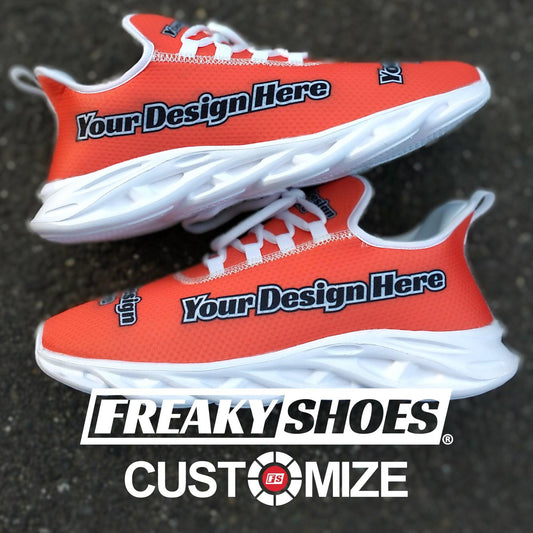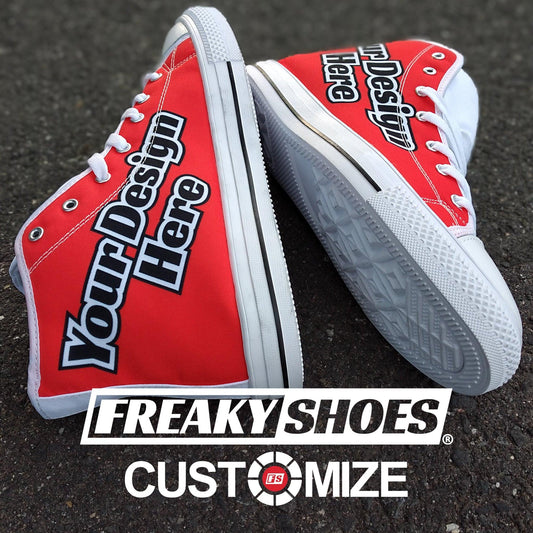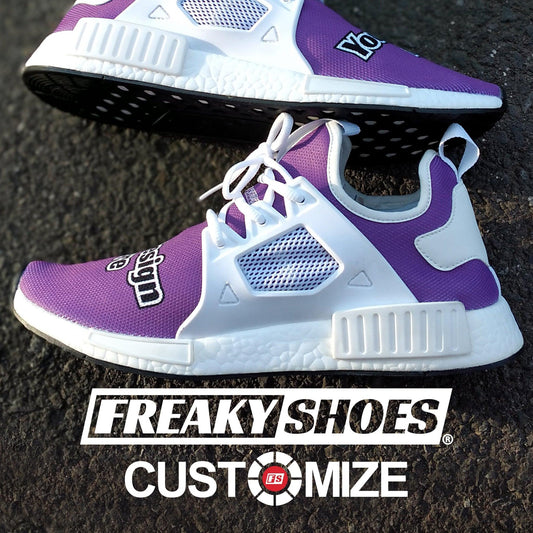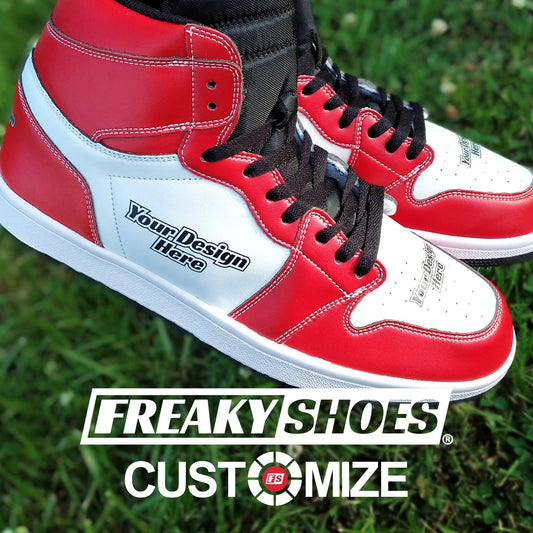Crocs are renowned across the world mainly for their unique design, lightweight properties, vibrant colors, and supreme comfort.
However, when it comes to walking long distances in Crocs, the majority of the people wonder if they are truly up to the task. This often leads individuals wondering, “Can you walk long distances in Crocs?”
To uncover the truth, we have prepared the ultimate guide in which we will explore whether Crocs are suitable for long-distance walking.
In addition, we will also see how Crocs compare to other types of footwear, and all the essential things worth considering if you plan to take them for a long stroll.
Are Crocs Suitable for Long-Distance Walking?

Crocs have rightfully earned a reputation for being one of the most comfortable types of footwear available. Their design prioritizes ease of wear, making them a popular choice for a wide range of activities.
Crocs are best known for their unmatched comfort, thanks to their lightweight, cushioned design. The soft foam material, known as Croslite, has the ability to mold flawlessly to the shape of your feet, providing a custom fit.
When you slip on a pair of Crocs, the first thing worth noticing is how light they feel. This lightweight nature contributes significantly to their comfort, as it drastically minimizes the strain on your feet during daily activities.
Additionally, the cushioned soles of Crocs are designed to absorb shock, which helps in reducing the impact on your joints and muscles as you walk. This shock absorption is particularly beneficial for short to moderate walks, where you might be on your feet for an hour or two at a time.
During such activities, Crocs can help to prevent the kind of foot fatigue that can set in when wearing less cushioned footwear.
As a result, this makes Crocs ideal and comfortable for short-term wear. But, the question is, “What about long-distance walking?”
While Crocs excel in providing comfort for short distances, they may not be as suitable for longer walks as they do not provide the necessary support that your feet require. Walking long distances puts more strain on your feet, which is why you need footwear that offers adequate cushioning as well as sufficient support.
However, with their soft and flexible design, Crocs lack the structured support found in more specialized walking shoes or athletic sneakers. This lack of support can become problematic over longer distances, as your feet begin to require more stability and arch support to maintain comfort.
Suffice it to say, even though Crocs can be a fantastic choice for casual, everyday wear or for short walks, they may fall short when it comes to supporting your feet during extended periods of walking.
The same features that make Crocs comfortable for short-term use, i.e., their flexibility, softness, and lack of rigid structure, are the same features that can lead to discomfort and even pain when walking long distances.
Hence, if you are planning on taking a lengthy walk or spending a lot of time on foot, it is imperative to consider whether Crocs will provide the necessary support or if a more structured shoe might be a better choice.
How Long Can You Walk in Crocs?
On average, many people might find it a comfortable choice of footwear for walking distances of up to 3-5 miles. However, it is worth noting that the lack of arch support and cushioning in Crocs is bound to cause immense discomfort.
Crocs are mainly designed for casual wear, such as running errands, gardening, or lounging at home. So, even if you plan to walk for extended periods or over long distances, you must be prepared to experience some kind of soreness in your arches, heels, and ankles.
Essential Factors to Consider When Walking in Crocs
When deciding whether to wear Crocs for a walk, especially a long one, it is crucial to consider multiple factors impacting your overall comfort and foot health.
Despite their many benefits, it is quite evident that Crocs may not be the best choice in every situation. Having said that, here are the key factors worth considering when walking in Crocs:
Foot Structure
Foot structure is one of the most important factors when considering walking long distances in Crocs. Everyone has a different foot structure. This indicates that the level of support required tends to vary considerably from one person to another.
Moreover, Crocs have a soft and flexible design and offer very little arch support, which might be insufficient for individuals with certain foot types.
Flat Feet
People with flat feet have lower arches or their arches are non-existent, indicating their feet might roll inward while walking. As a result, this can put additional stress on their feet, ankles, and knees.
Since Crocs do not provide adequate arch support, wearing them for extended periods can aggravate discomfort or cause pain in the arches and heels.
High Arches
If you have high arches, your feet might be unable to distribute weight evenly. This leads to pressure points that can cause pain or fatigue. Again, the lack of firm arch support in Crocs might not offer the required stability and cushioning that high arches require.
Terrain
The type of terrain you choose to walk on also plays a crucial role in determining whether Crocs can be worn for walking long distances.
Ideally, Crocs are suitable for flat, even surfaces where their lack of structure and flexibility can shine. However, when the terrains are more challenging, they may not perform as well.
Smooth Surfaces
Crocs are perfect for smooth, flat, and even surfaces such as paved sidewalks, indoor floors, or parks. The padded sole and lightweight design provide substantial protection and comfort on these types of terrain.
Steep Inclines
Steep inclines call for footwear that provide excellent traction and support. Unfortunately, Crocs do not provide the support or grip required to safely walk up or down steep hills or inclines.
Rough or Rocky Paths
Crocs may not be the best choice of footwear for walking on rocky paths, uneven ground, or trails with loose gravel.
The flexible material of Crocs does not provide the right amount of stability required to traverse these types of terrain safely.
Moreover, there is a significant risk of slipping, tripping, or twisting an ankle when walking on uneven surfaces in Crocs.
Note: It is better to opt for shoes that offer more stability and grip for walking on rough, rocky, or steep terrains, such as hiking shoes or athletic sneakers.
Duration
The time duration you plan to spend walking in your Crocs plays a vital role too. As already discussed, even though Crocs can be comfortable for shorter periods, they may not be the best choice for extended wear.
Short Walks (Under 5 Miles)
If you plan a short walk, such as taking a quick stroll along the park, a trip to the store or for running errands around town, Crocs can provide the ultimate comfort. Their lightweight design and cushioned sole aid in reducing foot fatigue during these shorter activities.
Long Walks (Over 5 Miles)
The limitations of Crocs become more apparent in longer walks. The lack of structured support and cushioning can contribute to discomfort, especially as the distance increases.
Eventually, you might feel soreness in your feet, specifically in the arches and heels. Additionally, you may experience more strain on your ankles and knees.
When going for walks over 5 miles, it is advisable to choose footwear with more structured support, such as walking shoes or running shoes, which are explicitly designed to handle the challenges of longer distances.
Effective Tips to Enhance Comfort for Long-Distance Walking
By now, you already know that Crocs are not a suitable choice of footwear for long-distance walking. However, there are some things you can do to mitigate some of the challenges.
If you are determined to wear Crocs for a long-distance walk, there are several tips you can implement to enhance their comfort and make your walking experience all the more enjoyable.
Socks for Preventing Blisters and Enhancing Comfort
Though most people prefer to wear Crocs without socks, you can experience a drastic boost in your comfort level during long walks by adding a pair of socks.
Blister Prevention
Socks aid in keeping the feet dry by drawing sweat away from the skin. This alleviates the formation of blisters, which are prevalent during long walks.
Blisters are mostly a consequence of friction between your skin and the shoe, especially when your feet are damp.
As a result, when you wear socks, they will act as a barrier, reduce this friction, and help to prevent painful blisters.
Additional Cushioning
Socks also provide an extra layer of cushioning, which can help reduce pressure points and improve overall comfort of your Crocs. This can be beneficial during long walks, where your feet may start to feel sore after extended periods of activity.
Temperature Regulation
Depending on the weather, socks do a terrific job of regulating the temperature of your feet. Moreover, they do a dual job of providing warmth in cooler conditions and keeping you feel dry and cool during warmer conditions.
Insoles for Elevating Support and Cushioning
One of the most effective ways to make Crocs more suitable for long-distance walking is by adding orthotic insoles.
Cushioning
Insoles also add an extra layer of cushioning and absorb shock with each step. This is particularly beneficial for long-distance walking. It aids in reducing the impact on your joints and muscles and makes each step feel softer and more comfortable.
Arch Support
Crocs fail to provide the significant arch support crucial for maintaining proper foot alignment during long walks. However, orthotic insoles with built-in arch support can help distribute your weight more evenly across your feet, minimizing the risk of fatigue and discomfort.
Custom Fit
You can customize orthotic soles to your specific foot shape and needs, to achieve a personalized fit that boosts the overall comfort of your Crocs. Whether you have flat feet, high arches, or any other foot conditions, the right insoles can make a considerable difference in how your feet feel after a long walk.
Alternatives to Crocs for Long-Distance Walking

Even though Crocs can be made more comfortable and supportive for long walks with the right adjustments, they are generally not suitable for everyone.
Nonetheless, if you are planning a long walk or know that you will be on your feet for a long time, here are alternative footwear options that are especially designed for endurance and support.
Athletic Sneakers
Athletic sneakers are designed while keeping performance and one’s comfort in mind. They usually provide more significant arch support, stability, and cushioning than Crocs, which is why they are deemed a better option for long-distance walking.
Additionally, athletic sneakers are designed to handle a variety of terrains, from flat pavement to uneven trails.
Walking Shoes
Walking shoes are specifically designed for walking and stand out because of their ability to provide a balance of comfort, support, and durability.
They usually feature adequate arch support, cushioned insoles, and a unique design that promotes a natural style of walking. So, if you are someone who spends most of your time on feet, walking shoes are your best bet.
Hiking Shoes
Hiking shoes are an excellent alternative for rugged terrain. They provide essential stability, grip, and protection to keep your feet comfortable and safe, even on the most challenging surfaces.
Hiking shoes are also designed to tackle the demands of longer walks while providing the support and durability one requires for extended wear.
Conclusion
All inclusive, despite their undeniable comfort for short walks and casual wear, Crocs are not exactly a good choice of footwear for long-distance walking. They lack the necessary cushioning and arch support that play a crucial role for covering long distances.
Hence, if you choose to walk long distances in your Crocs or wear them for extended periods, you can expect to experience immense pain and discomfort especially on uneven terrain.
It is worth considering footwear that offers more structured support to keep your feet comfortable and pain-free. However, with the right precautions, such as adding insoles and wearing socks, you can still extend the comfort of your Crocs for longer walks if needed.
Luckily, with Freaky Shoes, you no longer have to compromise on support and comfort when you can get the best of both worlds: functionality and style.
Here at freakyshoes.com, we let you design custom-made shoes that match your personal style while providing the perfect cushioning and support you need for long-distance walking.
Whether you want to take a leisurely stroll across the city or hit the rocky trails, our custom shoes are designed to keep you comfortable and stylish every step of the way.
Visit FreakyShoes.com today and create your perfect pair of walking shoes designed for none other than you.


















